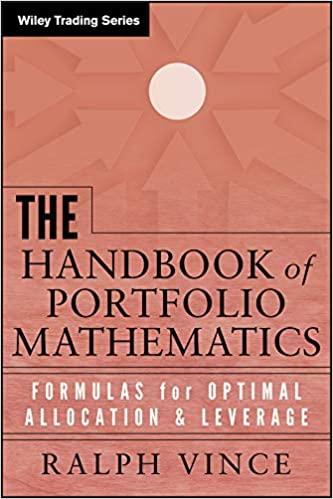

6. Assume capital providers require a 16% return and a tax rate of 28%. REQUIRED: 1.1 Calculate the net present value (NPV) and internal rate of return (IRR) of the project. (20) 1.2 1.3 Based on your calculations above, recommend whether Siyahamba should invest in the project. (Provide reasons for your answer) (2) Briefly explain why NPV method is superior that payback period method. END OF ACTIVITY 4 (3) QUESTION 1 (25 marks) Siyahamba Ltd is a company listed on the Johannesburg Securities Exchange. The company was established 15 years ago aimed at addressing the public transport shortages in South Africa. Siyahamba owns buses and shuttles that are used on a daily basis by commuters across the country. A recent spate of increased economic conditions and increased competition have resulted in a decrease in profits over the previous 5 years. As a result, the directors are of the opinion that a different revenue stream should be considered in order to increase profits. The CEO of Siyahamba suggested that the company should diversity and consider investing in a tyre manufacturing project. If successful, the tyre project will be housed in one of Siyahamba's premises currently occupied by a tenant. The tenant's lease agreement will have to be terminated. The tenant currently pays rentals of R300 000 per annum. You are the executive assistant to the CEO, and he has requested you to provide a detailed analysis of the project over four years. He provided you with the following information: 1. A year ago, market research was conducted at a total cost of R275 000. The following was revealed relating to demand of tyres from external parties: Annual Demand (Units) 95 000 70 000 40 000 Probability 60% 25% 15% 2. The project will require an initial investment of R 15 000 000 on specialized machinery. SARS allows wear and tear of 15% per annum on machinery. The machinery will be sold for R7 000 000 at the end of the project. 3. Siyahamba will use some of the tyres for its bus fleet and avoid paying external suppliers. It is expected that the company will save R2 500 per tyre over the next four years. The company utlizes 300 bus tyres annually. 4. Siyahamba will provide managerial services for the project from its head office. The cost of the services will be as follows: Incremental head office costs Recovery of head overheads Year 1 R150 000 R50 000 Year 2 R150 000 R50 000 Year 3 R150.000 R50 000 Year 4 R150 000 R50 000 5. It is expected that each tyre will be sold for R2 400 over the life of the project. The company will incur variable cost of R2 250 per tyre over the life of the project. Siyahamba will have to hire a trained machine operator for the project. The operator will eam R830 000 per annum over the life of the project. 6. Assume capital providers require a 16% return and a tax rate of 28%. REQUIRED: 1.1 Calculate the net present value (NPV) and internal rate of return (IRR) of the project. (20) 1.2 1.3 Based on your calculations above, recommend whether Siyahamba should invest in the project. (Provide reasons for your answer) (2) Briefly explain why NPV method is superior that payback period method. END OF ACTIVITY 4 (3) QUESTION 1 (25 marks) Siyahamba Ltd is a company listed on the Johannesburg Securities Exchange. The company was established 15 years ago aimed at addressing the public transport shortages in South Africa. Siyahamba owns buses and shuttles that are used on a daily basis by commuters across the country. A recent spate of increased economic conditions and increased competition have resulted in a decrease in profits over the previous 5 years. As a result, the directors are of the opinion that a different revenue stream should be considered in order to increase profits. The CEO of Siyahamba suggested that the company should diversity and consider investing in a tyre manufacturing project. If successful, the tyre project will be housed in one of Siyahamba's premises currently occupied by a tenant. The tenant's lease agreement will have to be terminated. The tenant currently pays rentals of R300 000 per annum. You are the executive assistant to the CEO, and he has requested you to provide a detailed analysis of the project over four years. He provided you with the following information: 1. A year ago, market research was conducted at a total cost of R275 000. The following was revealed relating to demand of tyres from external parties: Annual Demand (Units) 95 000 70 000 40 000 Probability 60% 25% 15% 2. The project will require an initial investment of R 15 000 000 on specialized machinery. SARS allows wear and tear of 15% per annum on machinery. The machinery will be sold for R7 000 000 at the end of the project. 3. Siyahamba will use some of the tyres for its bus fleet and avoid paying external suppliers. It is expected that the company will save R2 500 per tyre over the next four years. The company utlizes 300 bus tyres annually. 4. Siyahamba will provide managerial services for the project from its head office. The cost of the services will be as follows: Incremental head office costs Recovery of head overheads Year 1 R150 000 R50 000 Year 2 R150 000 R50 000 Year 3 R150.000 R50 000 Year 4 R150 000 R50 000 5. It is expected that each tyre will be sold for R2 400 over the life of the project. The company will incur variable cost of R2 250 per tyre over the life of the project. Siyahamba will have to hire a trained machine operator for the project. The operator will eam R830 000 per annum over the life of the project








